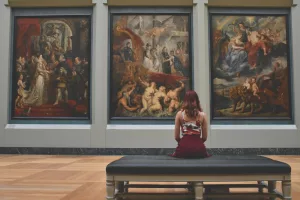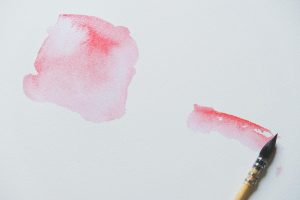Watercolor painting is a beautiful and versatile medium that offers endless possibilities for artistic expression. For beginners looking to embark on their watercolor journey, mastering the fundamental techniques is essential. One of the best techniques for beginners to learn is wet-on-wet painting, where the paint is applied to wet paper, creating soft and blended edges. This technique allows for seamless blending and a dreamy, ethereal quality in the artwork. It’s a fantastic way for beginners to get comfortable with the medium and understand how water and pigment interact on the paper.
Mastering Basic Techniques
Wet-on-Wet Technique
Let’s dive a little deeper into the wet-on-wet technique. This method is all about timing and control. When you apply paint to a wet surface, the colors will naturally flow and merge into each other, which can create beautifully soft transitions. A practical tip is to start with lighter colors and gradually move to darker shades. This way, you maintain control over the painting and avoid muddying the colors. A common mistake beginners make is using too much water, leading to uncontrollable bleeding of colors. To avoid this, practice on scrap paper to gauge the right amount of wetness.
Wet-on-Dry Technique
Another foundational technique is wet-on-dry, where you apply wet paint onto dry paper. This method is excellent for achieving sharp edges and defined shapes. It’s particularly useful for detailed work and adding final touches to your painting. For example, you might use wet-on-dry to create the intricate veins in a leaf or the delicate petals of a flower. To practice, try painting simple shapes and focus on creating crisp edges. Remember, the key here is precision, so take your time and refine your brush control.
Layering and Building Depth
Layering for Richness
Layering is a technique where you build up layers of transparent washes to achieve depth and richness in a painting. Patience is crucial here, as each layer must dry completely before applying the next to prevent colors from mixing unintentionally. This technique is akin to building a story; each layer adds a new chapter. Start with broad washes to establish your composition and gradually add layers to build depth. For instance, in a landscape painting, you might start with a light sky wash, then add layers for distant hills, and finish with detailed foreground elements.
Creating Textures and Gradients
Understanding how to control the amount of water in your paint is crucial for creating textures or smooth gradients. For textures, you might experiment with salt or tissue paper to add interest to your painting. Sprinkle salt on wet paint and watch as it absorbs the moisture, leaving behind unique patterns. For smooth gradients, practice transitioning from light to dark, like a sunset sky. Start with the lightest color at the horizon and blend upwards to darker hues. Gradual transitions require patience and a light touch, ensuring each brushstroke blends seamlessly into the next.
Understanding Color Theory and Mixing
Exploring the Color Wheel
Color theory is a key aspect of watercolor painting. Familiarize yourself with the color wheel; it’s your roadmap to color mixing. Start by exploring primary colors: red, blue, and yellow. From these, you can create secondary colors like green, orange, and purple. A fun exercise is to create a color chart, mixing primary colors in various ratios to see the range of hues you can produce. This hands-on practice will deepen your understanding of color relationships and help you make informed choices in your artwork.
Temperature and Harmony
Understanding color temperature—warm vs. cool colors—can dramatically impact the mood of your painting. Warm colors like reds and yellows evoke warmth and energy, while cool colors like blues and greens suggest calmness and tranquility. Try creating two versions of the same scene, one with warm colors and the other with cool colors, to see how they convey different emotions. Similarly, experimenting with color harmony—like complementary or analogous schemes—can lead to more dynamic compositions. A complementary scheme, such as blue and orange, can make your painting pop, while analogous colors create a more harmonious feel.
Exploring Different Brush Techniques
Brush Shapes and Sizes
Experimenting with different brush techniques is essential for developing a unique style in watercolor painting. Start by familiarizing yourself with various brush types, such as round, flat, and filbert brushes. Each has its own characteristic stroke, affecting the texture and detail of your painting. For instance, a round brush is versatile, great for detail work and washes, while a flat brush is excellent for bold strokes and sharp edges. Practice different brushstrokes on scrap paper to understand how each brush type handles paint and water.
Advanced Brush Techniques
Once you’re comfortable with basic brushstrokes, explore advanced techniques like dry brushing, splattering, and lifting. Dry brushing involves using minimal water to create rough, textured effects, perfect for depicting rocky surfaces or tree bark. Splattering, on the other hand, can add dynamic energy to your paintings, ideal for creating the illusion of rain or snow. For lifting, use a damp brush or tissue to remove paint from the paper, creating highlights or correcting mistakes. Each technique offers a unique way to manipulate paint, enhancing your expressive range.
Practicing Regularly and Seeking Feedback
Developing a Routine
Consistent practice is key to improving in watercolor painting. Aim to paint regularly, even if it’s just a quick sketch or a small study. Establish a routine that fits your lifestyle, whether it’s painting every morning or dedicating a few hours on weekends. Consider setting up a dedicated space for your art supplies, making it easier to dive into painting without the hassle of constant setup. Keeping a sketchbook or journal can also track your progress and provide a safe space for experimentation without the pressure of creating a masterpiece.
Embracing Constructive Feedback
Seeking feedback from fellow artists or instructors can provide valuable insights and help identify areas for improvement. Join local art classes or online communities where you can share your work and receive constructive criticism. Remember, feedback is an opportunity for growth, not an attack on your abilities. Approach it with an open mind and consider how you can apply suggestions to enhance your work. Additionally, critique your own work by comparing it to artists you admire. Identify what you love about their paintings and experiment with incorporating those elements into your own style.
Expanding Your Skills and Inspiration
Exploring Mixed Media
As you grow more confident in your watercolor skills, consider experimenting with mixed media. Combining watercolor with ink, colored pencils, or gouache can add exciting new dimensions to your work. For example, using ink for outlines can add boldness and definition, while colored pencils can introduce intricate details. Gouache, being opaque, can be layered on top of watercolor to create highlights or correct mistakes. The possibilities are endless, and each medium offers its own set of challenges and rewards, pushing you to think creatively and broaden your artistic horizons.
Finding Inspiration
Inspiration is all around you, from the natural world to urban landscapes. Take time to explore your surroundings and observe the play of light and color. Carry a sketchbook with you to capture ideas and scenes on the go. Visiting art galleries or browsing online art platforms can also spark inspiration. Look at different styles and genres, and consider how you can incorporate those influences into your own work. Remember, inspiration fuels creativity, so always be open to new ideas and experiences.
Common Mistakes and How to Avoid Them
Overworking the Painting
One common mistake beginners make is overworking their paintings, leading to muddy colors and loss of vibrancy. It’s important to know when to step back and let the painting breathe. If you find yourself overworking a piece, take a break and return with fresh eyes. Sometimes, stepping away for a few hours or even a day can provide a new perspective and help you make more effective decisions.
Skipping the Planning Stage
Another pitfall is skipping the planning stage and diving straight into painting. Taking time to plan your composition, sketching light outlines, and considering your color palette can save you from frustration down the line. A solid plan acts as a roadmap, guiding you through the painting process and helping you achieve your artistic vision more effectively.
Conclusion
By focusing on mastering fundamental techniques, understanding color theory, exploring brush techniques, and practicing regularly, beginners can build a strong foundation in watercolor painting and unlock their creativity in this vibrant medium. Watercolor painting offers endless possibilities for artistic expression, and with dedication and passion, you can embark on a fulfilling creative journey in this captivating medium. Whether you’re painting serene landscapes or bold abstracts, remember that every brushstroke brings you closer to discovering your unique artistic voice.



